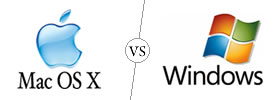Difference between Bonds and Stocks
Key Difference: Bonds are debt instruments that are used by companies, corporations, credit institutions and government in order to acquire capital for their business. Stocks are equity instruments that offer ownership in the company in exchange of money.
Bonds and stocks are two different ways that a business entity can raise capital for operations. Every business needs capital from time to time in order to start up a business, expand the business or venture into a new segment and for this they need a vast amount of capital, which even banks cannot provide. Hence, using stocks and bonds, a company can easily raise capital and pay the amount later.

Bonds are debt instruments that are used by companies, corporations, credit institutions and government in order to acquire capital for their business. These institutions issue bond certificates and give them to the common public; the public in return provides them with capital. The certificates state the expiry of the bond certificate and the percentage of interest that the company will pay the purchaser. It is similar to an IOU or a loan, where the bond holder lends the money to the company in return for interest over a number of years.
The bonds do not give dividends, but rather have a fixed interest rating that is set during the creation of the bond. The interest rate does not fluctuate depending on the company’s profits and losses. The company then provides fixed interest over a period of time, such as every six months or so, until the expiration of the bond certificate, known as maturity. Upon maturity, the company then returns the principle amount to the lender. The most common form of issuing bonds is underwriting, where investment bankers raise capital on behalf of corporations. There are various different types of bonds that can be issued or invested it, including bonds that may be issued in foreign currencies as they may be considered more stable. Bonds are considered as a long-term investment, where maturity dates can extend up to 30 years. They are also considered a safer investment as the investor is not affected by the profits and losses of a company.
 Another form of investment includes stock. However, when an investor purchases a stock of the company it also purchases ownership into the company. Companies issue stocks as they are a faster, easier and a safer way for them to raise capital. Stocks are equity instruments that offer ownership in the company in exchange of money. The investor invests capital in return for voting rights in the company. The stock of a company is divided into shares, where a person purchasing one or more share of the companies can identify himself as a stock owner. Shares can be issued at the start up of a company or at a later time when a company becomes more stable, it can also issue additional shares depending on its net worth in the market. The price of a company’s stocks depends on the company’s worth in the market.
Another form of investment includes stock. However, when an investor purchases a stock of the company it also purchases ownership into the company. Companies issue stocks as they are a faster, easier and a safer way for them to raise capital. Stocks are equity instruments that offer ownership in the company in exchange of money. The investor invests capital in return for voting rights in the company. The stock of a company is divided into shares, where a person purchasing one or more share of the companies can identify himself as a stock owner. Shares can be issued at the start up of a company or at a later time when a company becomes more stable, it can also issue additional shares depending on its net worth in the market. The price of a company’s stocks depends on the company’s worth in the market.
There are two main different types of stockholders, preferred or common. The more common being well, common. A common stockholder has voting rights in the company and can exercise this right in corporate decisions. A preferred stockholder, though also has ownership in the company, does not have voting rights. The only benefits that preferred stockholder has is that any profit the company makes they are the first to receive a dividend before any dividends can be issued to other shareholders. A person investing in a company receives a stock certificate, a legal document that species the number of shares the investor holds. Shares are considered a dynamic investment since the investment of a stockholder is affected depending on a company’s profit and losses. It is a much safer option for a company, as the company is not entitled to return payment in case it is in loss. Stocks are an attractive investment as they are a short-term investment.
An investor can choose to invest in stocks, bonds or both depending on the type of investment he/she needs. In case, the investor has extra money that they may not need for a few years, he can invest in a bond, or if he is looking to double the money in a short amount of time, he can invest in stocks. Stocks are a more risky investment as the market changes constantly, while bonds are fixed investment at the end of which the person is bound to receive their initial amount. While investing, it is best to look at the fine print, as some companies claim that they are not liable to pay incase the company goes bankrupt, at which point the investor may end up losing all their investment. According to investors, it is best to have a combination of both investments.
|
|
Bond |
Stock |
|
Kind of Instrument |
Debt |
Equity |
|
Definition |
Bonds are debt instruments that are issued by corporations or government in order to raise capital. |
Stocks are equity instruments that are offer ownership to investors in the company in return for capital. |
|
Issuer |
Public sector authorities, credit institutions, companies, government and supranational institutions |
Corporation or joint-stock companies |
|
Holder |
Bond holders lend money to the issuer. |
The stock holders own a part in the company. |
|
Centralized system |
Bonds markets do not have a centralized exchange or trading system. |
Stock markets have a centralized exchange or trading system. |
|
Kind |
Securities |
Securities |
|
Yield Analysis |
Nominal yield, Current yield, Yield to maturity, Yield curve, Bond duration, Bond convexity |
Gordon model, Dividend yield, Income per share, Book value, Earnings yield, Beta coefficient |
|
Types |
Approximately 24 different types of bonds exist. |
There are 4 different types of stocks. |
|
Derivatives |
Bond option, Collateralized debt obligation, Credit derivative, Credit default swap, Collateralized mortgage obligation |
Credit derivative, Swaps, Hybrid security, Forwards, Options, Futures |
|
Participants |
Investors, Speculators, Institutional Investors |
Market maker, Floor trader, Broker |
Image Courtesy: teensguidetomoney.com, beginnersinvest.about.com









Add new comment